Uncover Chinon's vibrant flavors and culinary gems with our expert guides. Plan an unforgettable trip now!
Read more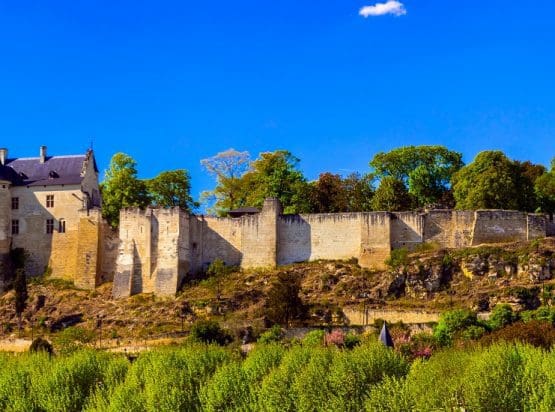
EXPLORE ALL OUR LOIRE VALLEY WINE REGIONS GUIDE
Last updated: April 4, 2025
Delicious, affordable, and eternally popular, Muscadet is as fashionable today as it was in the 1970s. This is despite a stubborn refusal (in terms of marketing only) to move with the times – Muscadet is the name of the wine, not a grape variety. The French, believing that terroir trumps all other considerations, never mention this all-important purchasing cue on the label.
Still, that intransigence hasn’t put off the hordes of loyal fans, both French and international, who continue to quaff Muscadet with oysters at every opportunity. And why not? Muscadet is a delectable drop: an aromatic, saline, bone-dry white perfect with seafood and always refreshing. It simply doesn’t get any better than this.
Discover More About French Wine
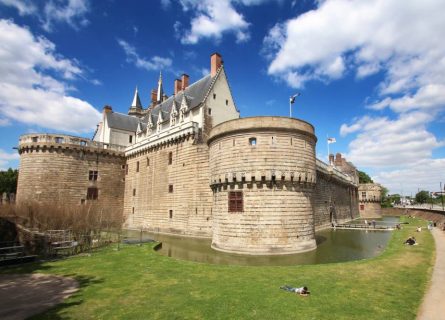
The western end of the Loire Valley is no stranger to occupation and invasion. Inhabited by the Celtic Gauls for over ten centuries, this sophisticated early civilization established good trading links with the ancient Greeks, whose colonies included Massilia (Marseille) on the Mediterranean coast.
However, the forces of Julius Caesar and his Roman armies eventually supplanted them in 52 BC. The Gauls used guerrilla tactics against these Latin interlopers for the next few years, refusing to give up hope. But gradually, their resolve weakened, and Roman rule in Gaul (France) reigned supreme. One of the first Roman advocates of the vine, Emperor Probus, is said to have ordered his soldiers to plant vineyards in the Pays Nantais. This was the artery that linked the Loire River to the Atlantic; it became one of Roman Gaul’s most important trading centers and agricultural provinces.
The Church’s Role in Viticulture
In the Middle Ages, viticulture became the domain of the Catholic Church, organized and managed by Benedictine monks. Yet there is no record of Melon de Bourgogne (the signature white grape of Muscadet) being cultivated until the 1600s. Indeed, most wine historians state that Dutch merchants introduced it following a devastating frost in 1709; the Flemish traders required large quantities of grapes for use in distillation.
Muscadet’s Rise and Innovation Through Centuries
By the 18th century, Nantes was France’s foremost port, transforming into a cutting-edge industrial center in the 1800s. Wine estates proliferated across the region as Muscadet became the height of fashion in Paris. In the 20th century, growers began experimenting with oak fermentation, extended lees stirring, and harvesting riper, healthier grapes. Despite some historical wobbles, Muscadet is in a relatively strong position in 2024.
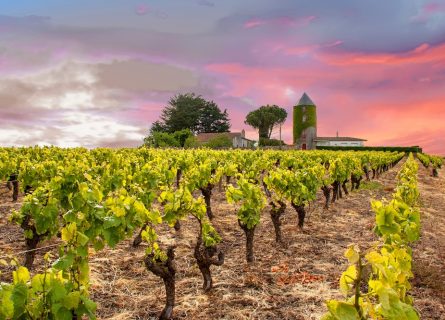
Welcome to the Pays Nantais – home of Muscadet and endless plates of fruits de mers. A former possession of Brittany, these expansive vineyards are situated in the far western corner of the Loire, close to the Atlantic. Indeed, the area under vine encompasses over 85 kilometers in total, stretching from the mouth of the Loire estuary to the outskirts of Angers.
However, most vines are found to the south and east of Nantes, spread across four distinct appellations. They are: Muscadet, Côtes de Grandlieu, Coteaux de la Loire, and Muscadet Sevre-et-Maine. The area is renowned for its maritime climate, with wet winters and mild summers. Such conditions yield light and invigorating white wines with crisp acidity and remarkable freshness. They are the height of fashion in 2024, and not just in the bistros and taverns of Nantes!
Diversity in Terroir and Wine Styles
Over 80 percent of Melon de Bourgogne is planted in the Sevre-et-Maine region today. It is a very pretty and undulating part of the Loire, with gently sloping hills covered in vines. The terroirs of the zone include gneiss (a type of metamorphic rock) and granite fragments. It is said that the villages of Vertou, Vallet, St-Fiacre, and La Chapelle-Heulin produce the best wines – high vine densities and lower yields undoubtedly contribute to the intense perfume and fruit that define high-quality Melon de Bourgogne.
Yet Sevre-et-Maine does not hold a monopoly on premium Muscadet. The best wines of Coteaux de la Loire, produced from old vines cultivated on steep slopes of granite and schist, can give it a run for its money. Minerality is the regional characteristic – a more tense and nervy expression of Melon de Bourgogne than you would typically find in Sevre-et-Maine.
Seeking Quality
Meanwhile, the ripest and most concentrated whites are usually made in Côtes de Grandlieu; there is more sand here, and the grapes ripen fairly early in the season. However, in the generic Muscadet appellation, quality can be variable. Our best advice is to stick to the most reputable names and producers, such as Domaine de l’Ecu or Jean Baptiste Hardy.
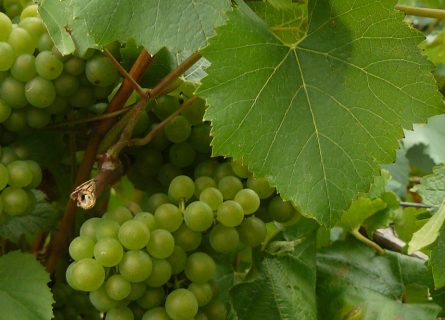
Winemakers in Muscadet were responsible for popularizing lees contact long before the technique became modish in the cellars of the New World. Indeed, the local culture strongly emphasizes the role of dead yeast cells; traditionally, Muscadet has bottled sur lie (directly from the fermentation vat without fining or filtration), enriching its texture and bolstering the flavor. It invokes obvious and indeed favorable comparisons with Champagne, another region that regards lees aging as a vital part of the quality equation.
Quality Evolution
Historically, lower-quality Muscadet suffered from harsh acidity and some unpleasantly reductive odors, exacerbated by poor winemaking, high yields, and/or a difficult vintage. Thankfully, in the 21st century, all the top wineries have considerably upped their game. They use only hand-harvested Melon de Bourgogne fruit, which they handle and vinify carefully to express clean fruit and vibrant aromatics. As a rule, they press the berries on arrival and clarify the juice via cold-settling in tank or filtration. They take subsequent care to select only free-run and light pressings for better wines. Many growers now favor cool fermentation in stainless steel, though the use of old wooden barrels and even amphorae is prevalent today.
The Art of Lees Aging
Then it is time for the lees to do their work. As incredible as it sounds, these dead yeast cells multiply in their millions during fermentation, eventually falling to the bottom of the vat after the sugar has been converted to alcohol. Their appearance is quite attractive – a silky white ‘mud’ that performs several functions. The most important is enrichment, softening the texture, and imparting a discernible creamy taste to the wine. But lees are also an important antioxidant, responsible for preserving freshness in the wines prior to bottling. Occasionally, winemakers will treat their best wines to a spell in new oak. The results can be very impressive, although too much barrique will spoil the simple purity of young Melon de Bourgogne.
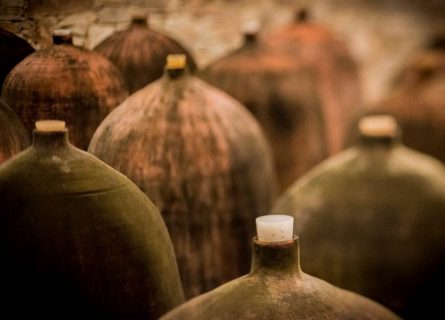
Muscadet’s Rise: Muscadet is one of the great success stories of modern times. In the mid-20th century, it was an obscure country wine; however, by the 1970s, it had become achingly trendy. As a result, the vineyard area doubled in size, and quality standards inevitably declined. Some regions would have been content to maintain this status quo, accepting a lazy slide into mediocrity. But the younger generation, inheriting the reigns in the late 1990s, had other ideas.
Revival and Innovation
Thus, very passionate and talented men and women reinvented the good name of Muscadet in the 21st century, achieving much progress in an incredibly short amount of time. The marketing organization ‘Vins de Muscadet’ supports them, which has propelled growers to success in emerging markets. An enthusiastic response from longstanding clients like the UK and Germany complements it. This is even though all the cards are stacked against them, namely, fierce competition from the New World, a lack of varietal awareness, rampant inflation over the past 12 months, and the vagaries of climate change.
Overcoming Challenges
Nonetheless, Muscadet continues to thrive. How it manages to do so is no mystery. The regional brand is strong – even teetotalers have heard of Muscadet – and the consistency of overall output is most admirable. Muscadet is not expensive, yet it can attain the heights of Premier Cru Chablis: structured, complex, and very food-friendly. It is a rare treat to encounter a fine wine in Europe that routinely sells for less than $20 dollars. For that reason alone, Muscadet thoroughly deserves its international triumph.
Melon de Bourgogne is a white grape varietal grown primarily in the Loire Valley region of France. It is best known for white wine Muscadet.
Find out more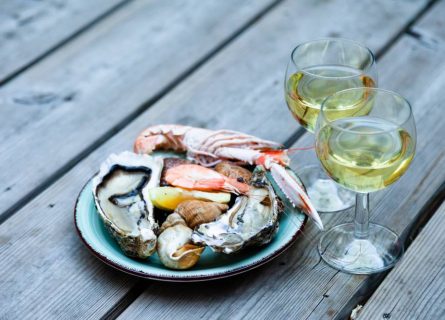
Every self-respecting sybarite knows to enjoy Muscadet stone cold, paired with a fresh plate of shrimps, oysters, mussels, or a combination of all three. In the excellent bistros of Nantes, chefs abundantly offer these, along with a plethora of crepes (pancakes) filled with various savory ingredients. Or, delve into sandre (perch) in rich beurre blanc and delectable coq au vin for a memorable gastronomic feast.
A Gastronomic Guide to the Cuisine of the Loire: Read more
If you would like us to customize an exclusive luxury tour, contact us and let us know your travel plans. We offer luxury food and wine tours for private groups of a mininium two guests. In addition, all of our private, chauffeured tours are available year-round upon request.

